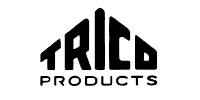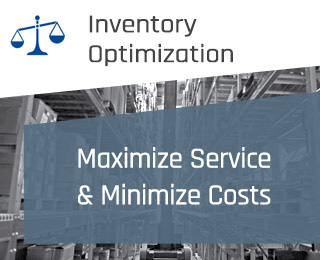The Solution: Service Level Driven Planning

Service Level Driven Planning
Smart Software has developed a methodical approach to address these pain points. “Service Level Driven Planning” (SLDP for short), powered by our inventory planning and optimization platform Smart IP&O. Service Level Driven planning extends beyond traditional demand planning and forecasting by leveraging probability modeling and analytics to drive inventory strategy. To learn more, read about the root causes below, our blog on Service Level Driven Planning, and check out Smart IP&O’s product page.
Challenges: Addressing the Root Causes of Inventory Pain
Intermittent Demand
Highly variable & intermittent demands make consistently accurate projections all but impossible. Countless hours are spent trying to anticipate what will come next rather than calibrating the organization’s risk tolerance and harnessing that information to determine required levels of supply. Intermittent demand – also known as lumpy, volatile, variable or unpredictable demand – have many zero or low volume values interspersed with random spikes of demand that are often many times larger than the average. Intermittent demand makes it difficult to accurately forecast demand and inventory requirements because there aren’t any inherent patterns. And any patterns that may exist are overwhelmed by the random spikes in demand. Many companies make the mistake of “chasing the forecast” insisting that sales or technicians provide better estimates of demand or turn to unreliable forecasting techniques in a quest to predict the next spike. Many resort to forecasting inventory requirements such as Min/Max levels and Reorder Points relying primarily on subjective business knowledge and simple “rule of thumb” estimates. The result is that millions of dollars are wasted every year because of either excess inventory costs or poor customer service due to stock-outs
Ad Hoc Process
The failure to establish common metrics makes it difficult to adjudicate conflicting priorities. For example, Finance may prefer to conserve cash, while Sales and Maintenance insist that they never stock out. The result is often a test of wills with forecast and inventory planners caught in the middle. This often results in decision making based on a pain avoidance response. For example, order quantities will often go up immediately following a stockout to ensure the outage never recurs. This tends to be a one-way ratchet until inventory carrying costs become an obvious drain of much needed cash. When inventory is out of balance, finger pointing often results. Operations is often stuck in the middle between sales and finance. Without a clear direction from the executive team on service goals, inventory budgets, and an insistence that sales and finance come to the table knowing that tradeoffs will have to be made, the planning team becomes disempowered and the cycle continues. An objective, quantifiable performance measure such as service level changes the discussion, putting a dollar valued on a negotiable level of service.
Rule of Thumb
Safety stock levels, reorder points, lead times, and order quantity directly influence the service vs. cost relationship. Every day, the ERP system makes purchase order suggestions and manufacturing orders based on these drivers. Ensuring that these inputs are understood and optimized will generate better returns on inventory assets. Organizations that are able to do so will see improvements in service and reductions in inventory costs. Unfortunately, the specific inventory policy being utilized is often unclear to many management teams. In absence of a clearly defined and communicated policy, planners are forced to develop their own unique approaches. These self-developed approaches are most often a combination of simple rules of thumb and institutional knowledge. Inventory executives are simply ill equipped to shape inventory according to the changing needs and priorities of the business. Inventory costs balloon and service performance suffers when unable to answer questions such as: “What is my current reorder point and reorder quantity policy, what level of service and inventory cost will this policy yield in the future, and how will performance and costs be influenced by specific changes to the policy.” Rule of thumb approaches don’t answer these questions. In fact, they ignore the critical role of of demand and supply uncertainty. This results in excess inventory for predictable items and more frequent stock outs on less predictable items.
SKU Proliferation
Whether ordering a commonly demanded, inexpensive item of an expensive intermittently demanded item, today’s customers expect high customer service levels. This means 100% of what is ordered must be shipped from stock or within a few days. Quoting a delivery time of more than few days may result in a cancelled order and/or violation of service level agreement costing thousands and jeopardizing customer relationships. To remain competitive, companies often must maintain a very large catalog of items all with potentially different demand patterns and volumes. Thousands of parts potentially stocked at dozens of locations means planners don’t have the bandwidth to proactively review inventory drivers. This results in outdated reorder points, order quantities, min/max levels, and safety stocks that trigger replenishment at the wrong time for the wrong amount ensuring poor allocation of inventory investments and low planner productivity
Contact Us Today for More Information
If you request a demo, one of our specialists will show you how Smart can help, using your own inventory data!



















